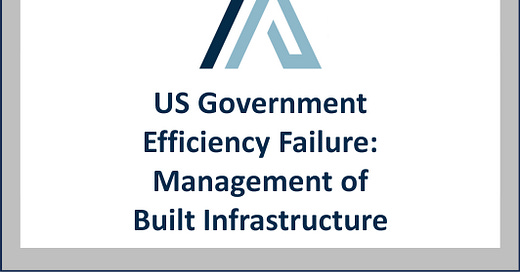US Government Efficiency Solution: Clarify Senior Real Property Officer Fiduciary Responsibilities
Miniseries on the US Government's Failure to Efficiently Manage its Built Infrastructure Portfolio
This Asset Management Partnership (AMP) Newsletter continues a miniseries that covers how the US Government is failing to manage its built infrastructure and how this problem can be solved. A complet…
Keep reading with a 7-day free trial
Subscribe to AMP Newsletter to keep reading this post and get 7 days of free access to the full post archives.




